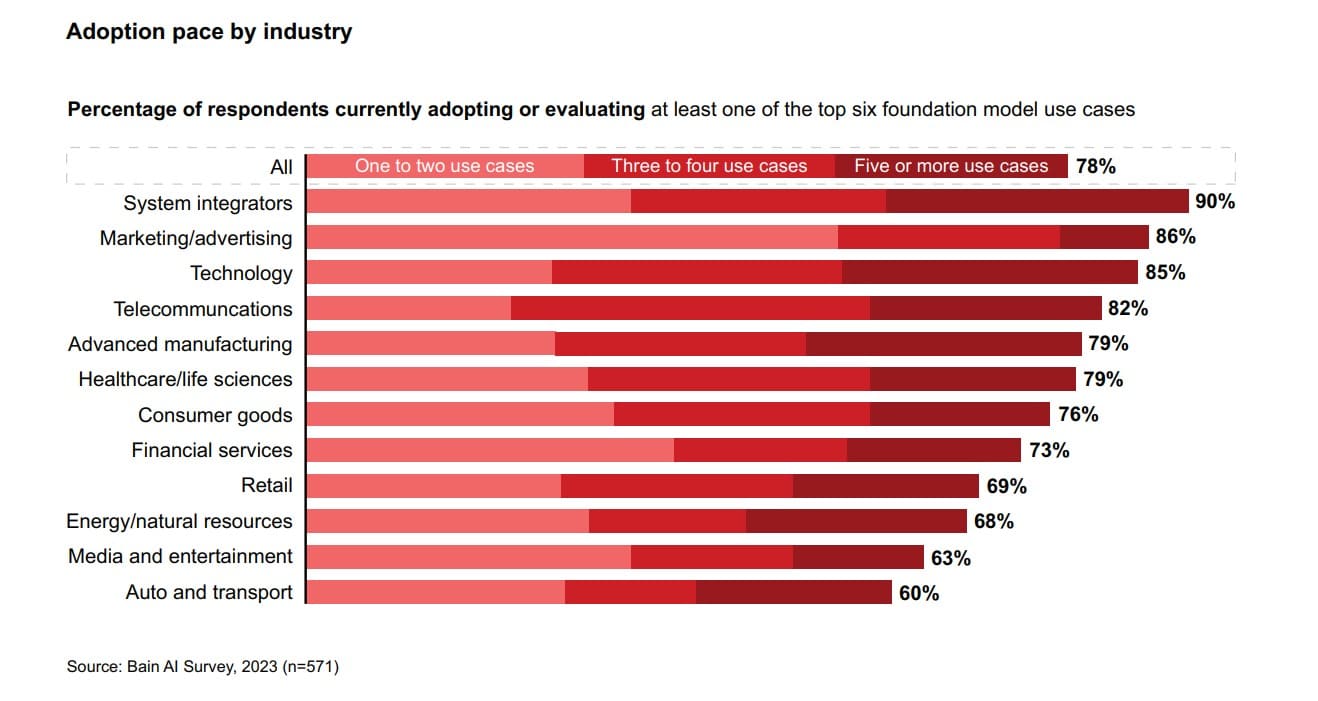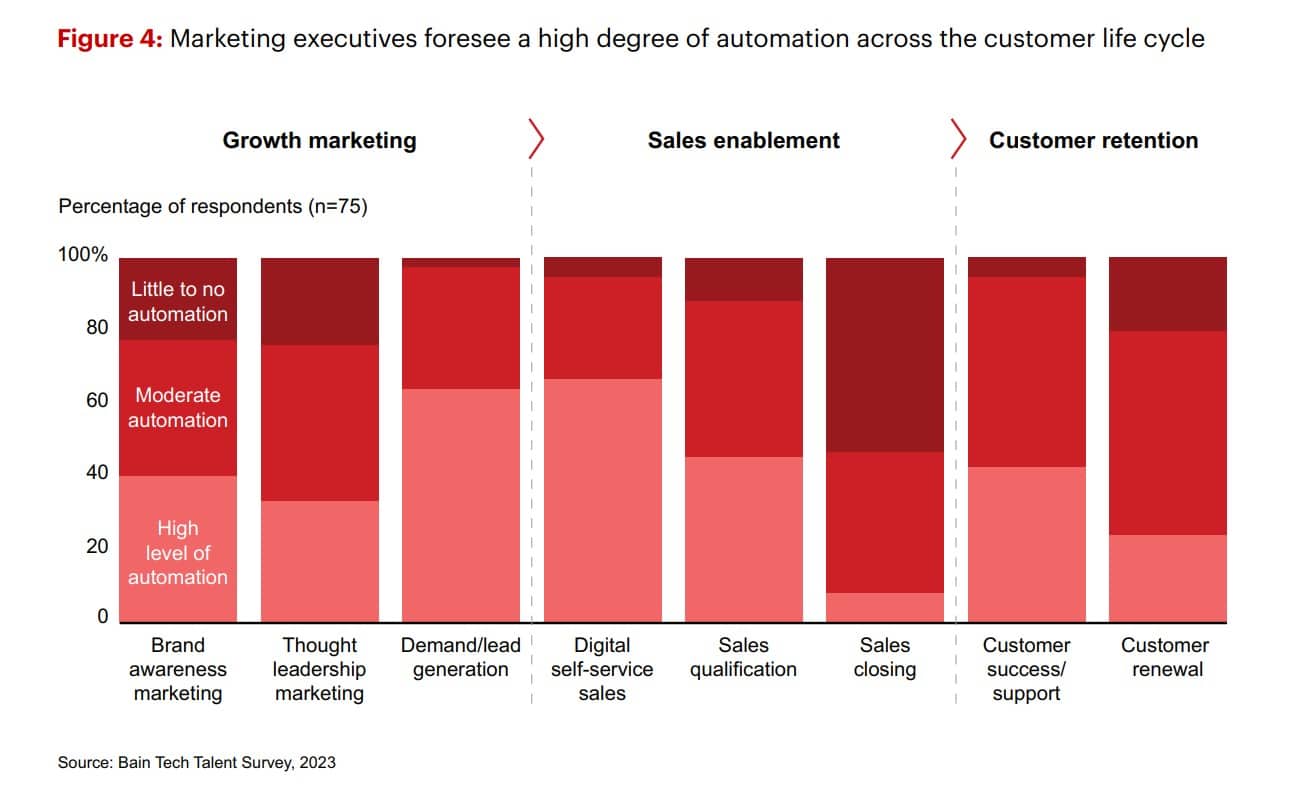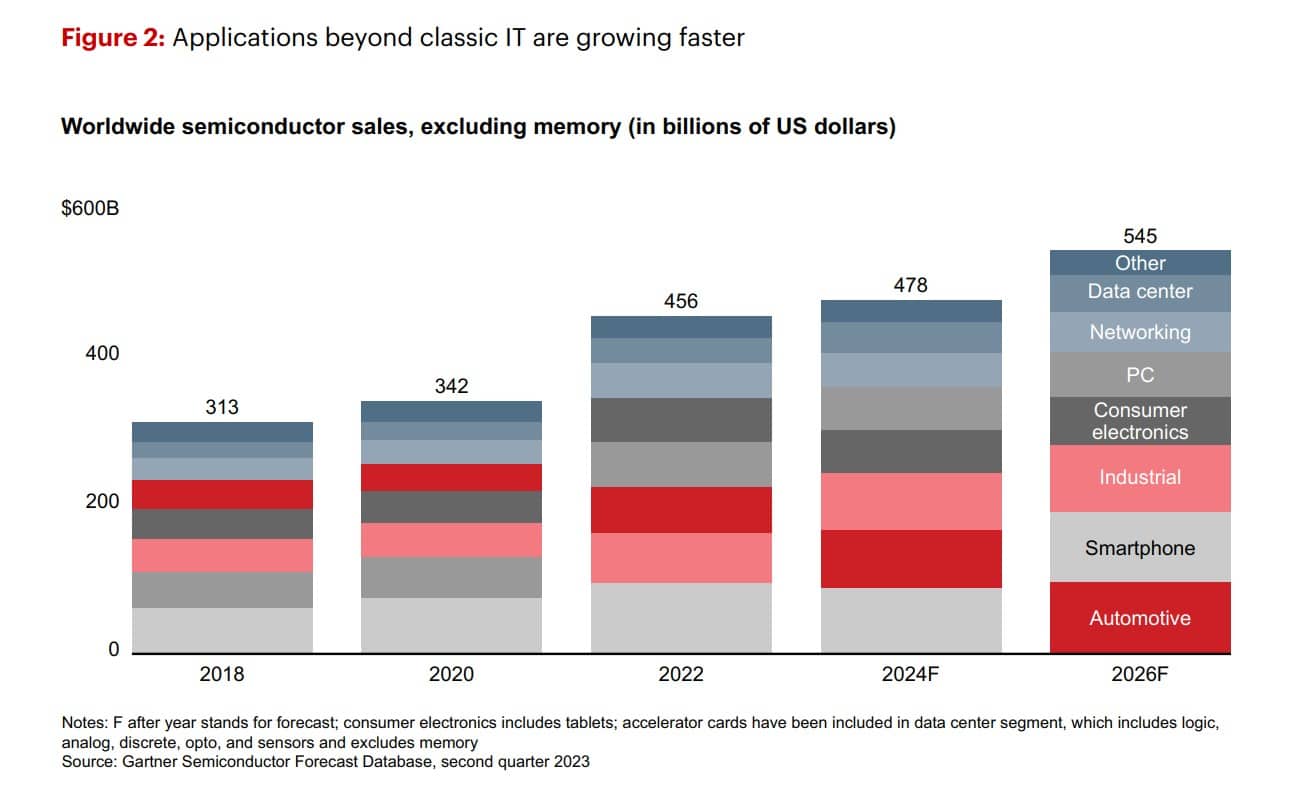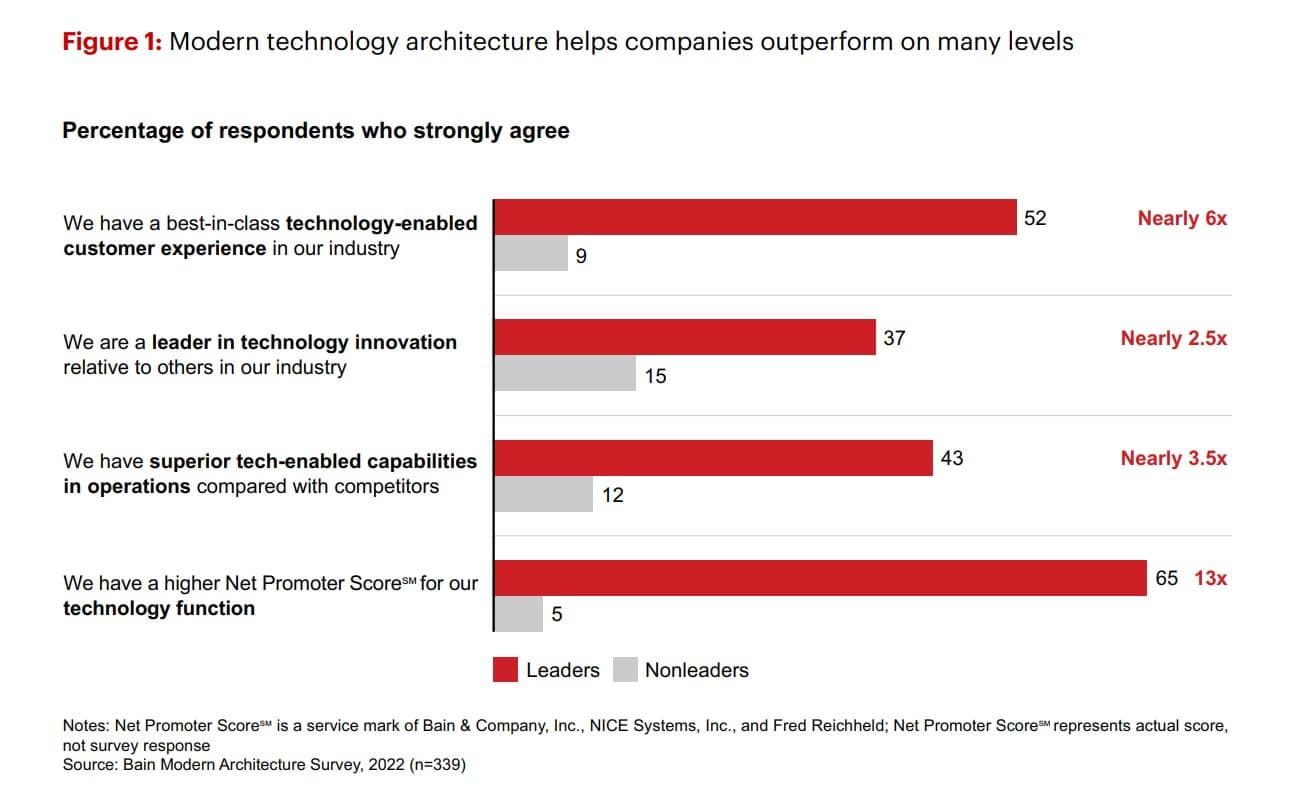When new technology emerges, it’s usually a smart idea to be patient and let your competitors be the “guinea pigs” to see how things actually play out. But this is not the case with AI, at least not any longer—the tech is advancing so fast, and early adopters have already progressed so significantly, that the holdouts who wait much longer won’t be able to keep pace. It’s becoming clear to see that AI isn’t going to hit a plateau and level out like most other emerging tech tends to do—the potential is so vast that businesses should expect its progression to be perpetual and swift.
New research from global business consultancy Bain & Company finds that fully three-quarters (75 percent) of the more than 570 executives recently surveyed said AI has already met or exceeded their expectations. The firm’s fourth annual Global Technology Report determines that the current generation of AI tools and models could help companies speed up 20 percent of worker tasks without loss in quality.

While the ease of access to large language model (LLM) application programming interfaces (APIs) has made it relatively easy to demonstrate new AI-powered products, the survey found that 89 percent of software companies are already using AI to differentiate their products—15 percentage points higher than other sectors. This trend is particularly evident among software development companies, where early adopters of AI are already seeing demonstrable results and productivity gains as they continue to explore new ways to use AI for their businesses. This trend underscores the importance for any software development company to integrate AI into their offerings to stay competitive and innovative
“Innovation is happening quickly, and we are still in early days,” said David Crawford, global head of Bain’s Technology practice, in a news release. “Three out of four software companies we surveyed believe that early movers will have a sustained advantage that will not level off. Software leaders expect the technology to generate significant opportunities to increase topline growth and customer retention. Our research shows that, in this fast-moving environment, companies that take a wait-and-see approach in terms of AI are at risk of being left behind.”

Generative AI talent implications
As customers introduce AI into their own processes, job roles are expected to change. Engineering, sales and marketing are among the functions most likely to benefit from AI over the next 18 months. Companies will need more engineering talent for AI and ML, particularly with experience building or integrating LLMs.
Generative AI will change the way companies market and sell their products and services as it enables significant automation across every step of the customer life cycle. In particular, demand and lead generation, digital self-service sales, customer success, and other support activities all have the potential to benefit from the types of automation that generative AI enables.
When it comes to investor appetite, the report shows that most investors agree that AI will have a significant effect on the tech sector. In fact, investors’ enthusiasm for AI is high, with AI and ML investments leading venture growth in the first half of 2023. However, most investors think that the evolution of the competitive landscape remains to be seen.

To avoid disruption risks, investors must consider both disruption potential and structural barriers in the market. They must also consider whether companies own proprietary data could enrich generative AI applications.
“Top funds are not waiting to see how generative AI changes this space. They are biasing toward action to capitalize on the potential of their incumbent software assets,” said Crawford.
Investor perspectives: A buyers’ market is coming for tech assets
Investor sentiment on the broader tech sector, on the other hand, has been lackluster since the third quarter of 2022. With deal volumes and exit values down, a growing backlog of deals, including more than $700 billion of tech assets purchased between 2018 and 2021, has led to longer hold times of tech portfolio companies.
In 2023, nearly half of tech portfolio companies have been held for more than four years, and for the first time since 2012, more than 40 percent of tech portfolio companies are being held for more than four years. This backlog of long-held portfolio assets is growing more quickly than the record level of dry powder that is holding steady, which will create a buyer’s market when activity picks up.
Investors reward tech companies differently based on each company’s context and point in the life cycle, according to Bain. Some investors are attracted to young, disruptive companies based on their growth potential. As companies and their markets mature, investors expect a mix of growth and returns. Mature companies with a proven track record in stable markets can expect slower growth while their investors are closely focused on profitability.
To maximize value, investor relations strategies of tech companies should change over time as markets mature. Understanding the role between market maturity, investor expectations, and sources of total shareholder returns are essential to deliver shareholder value at every step of the journey.

Post-globalization: Tech manufacturers diversify supply chains and R&D locations
Bain predicts that the global footprint of the technology value chain is likely to look very different a decade from now. Macroeconomic shocks in the last few years have prompted tech manufacturers to build resilience into their supply chains, primarily by expanding their geographic footprints to new locations in Asia, Europe, and North America, creating more flexibility within their talent pools.
“The initial impulse led companies first to disentangle their supply chains. Now, they are extending those efforts to R&D, talent, and innovation centers,” said Anne Hoecker, leader of the firm’s Americas Technology practice, in the release. “The key is practical resilience which means diversifying the most critical aspects of your business while getting closer to end markets.”
Hoecker said that it will take time for companies to move production, and they will also need to balance the risk of oversupply as new sites come online. The semiconductor industry is incentivizing the build-out of new fabs outside of historical locations, primarily targeted at newer chips at smaller node geometries, but new fabs take three to five years to come online and produce chips in volume. Even downstream original equipment manufacturers and component suppliers that are moving production to new locations will require a few years to materialize and deliver the same standards as original factories.
Other topics discussed in this year’s report include AI and cybersecurity, digital innovation, and intelligent edge.








